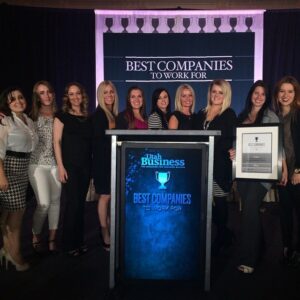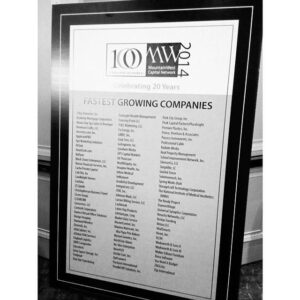Professional makeup artistry can be a rewarding and fun career path. A makeup artist applies cosmetics to people’s faces to create looks for specific events, fashion runways, special effects, and other situations based on inspiration from beauty trends, client input, and different scenarios.
In this blog, we will discuss the potential career options that are available to those who study professional makeup artistry.
What is a professional makeup artistry?
Makeup artists (MUA) use cosmetic products to enhance a person’s appearance, particularly their face. However, it is possible to become an MUA without attending a makeup school. It may be useful, though you don’t need a professional license to work as a makeup artist in every state.
Makeup artists may work on-call or by appointment, and for possibly lengthy hours, in addition to their normal full-time jobs.
Makeup Artist vs. Similar Roles
A makeup artist is not the same career path as a cosmetologist or an esthetician. A makeup artist is someone who specializes in applying make-up, while cosmetologists focus on the cosmetic health of a person, including hair and skin health, and estheticians assist with full-body medical skincare by offering facials, full-body treatments, massages, and more.
6 Professional Paths for Makeup Artists
Depending on their particular interests, professional makeup artists may pursue many professional paths. The following are some career options for professional makeup artistry:
- Fashion makeup: Makeup artists who work for designers on fashion shows and photoshoots are examples of professional makeup artists. Their looks differ depending on the designer, but most are bold, creative, expressive, and don’t adhere to typical societal beauty standards.
- Bridal makeup: This position is concerned with creating a look that complements the wedding’s concept and the bride’s desires. Makeup artists generally meet with the bride before the wedding to establish a style and do touch ups throughout the day.
- Beauty brand makeup: This part of makeup artistry works with cosmetic industry professionals and businesses to promote items in stores and photoshoots.
- Cinematic makeup: Given the rapid development of film and television equipment, this makeup look will require a smoother finish in the future, but it is dependent on the narrative, director, and genre of the project. These artists spend a lot of time on set. Makeup specialists use special effects makeup to create other-worldly prosthetics for actors in movie makeup, or everyday looks that fit the scenes the actor is portraying.
- Theatrical makeup: These makeup artists create looks that can withstand heat and perspiration by utilizing bright lights on active performers for hours. The exaggerated style makes it easy to see by the entire audience.
- Face and body paint: Using airbrushes, these artists create distinctive and magical looks for customers. Their work may be seen on the big screen, in a theater setting, or at specific events.
The 4 Simple Steps to Become a Makeup Artist
In order to pursue a successful makeup artist career, you’ll need: passion and ambition, as well as a few pointers along the road toward their goal profession:
- Hone your craft: Start simple. Explore all of the internet has to offer, and look for your local drugstore cosmetics counter or beauty supply store for basic tools. As your skill with cosmetics improves, add higher-quality tools to your makeup kit at a professional makeup boutique. Students will also learn the fundamentals of cosmetic artistry during a makeup education course.
- Get real-world experience: Look for work at a local beauty shop or theater, where a budding makeup artist can practice more exaggerated styles and learn how lighting affects the final appearance, if you’re not ready to go to beauty school or another training program. This is when you should put together your cosmetics kit in order to be ready for any event.
- Professional training: Cosmetology programs give makeup artists hands-on training and the opportunity to network with other makeup artists. To sell your particular skills as a specialist, you’ll need to construct a portfolio. While film, television, and fashion don’t usually need you to be a certified makeup artist, there are certain instances when it is required. Health consciousness, safety, and cleanliness between clients are always required when working with multiple people and one set of tools.
- Get your license: Working as a makeup artist is regulated differently in each state. Some states demand certification, while others need a cosmetology license obtained through professional education at a cosmetology school. In many places, neither is necessary. If you work in a salon, you may need a cosmetologist or esthetician’s license.
Are you interested in starting professional makeup artistry classes?
Makeup artists are in demand in every sector. Every industry requires a skilled cosmetic artist, from fashion to horror to weddings to Pop Art, from Comicon to politicians. You can pursue a wide range of careers, and the possibilities are exciting. The best MUA instructors in the business are taught by NIMA. You will walk away with more knowledge, understanding, and inspiration than you ever imagined. In this class, you’ll get the finest kit in the business.
Each item has been hand-selected by your instructor with a focus on quality and versatility. Your kit will allow you to create a full range of looks, from natural to mega-glam, and everything in between. This course is open to anyone and is advanced enough for those interested in becoming a makeup artist.
However, this course is highly entertaining and a fantastic investment for anybody who just enjoys beauty and wants to learn more about the makeup industry. By the time you get your certification, you’ll have already started assembling your portfolio with photographs from each makeup look you’ve completed.
If you want to learn beyond professional makeup artistry, learn how to find an esthetic school that offers more classes.





